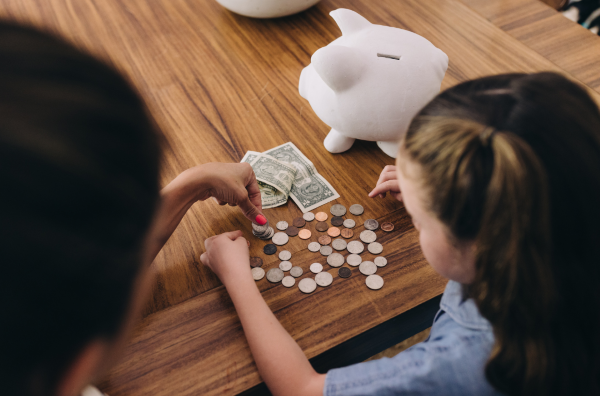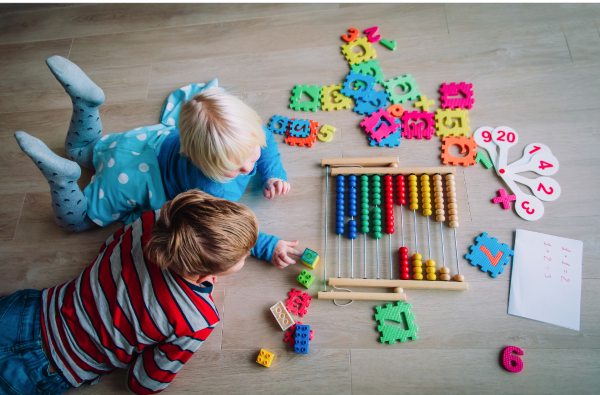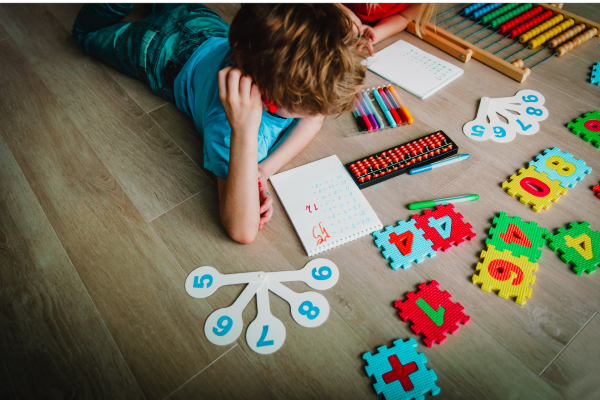Money Activities for Kids That Turn Playtime Into Payday
Imagine that you’re at the grocery store checkout, and your 7-year-old confidently counts out exact change from their piggy bank money. The cashier smiles as your child carefully selects the right combination of coins, no calculator needed. That’s the magic of hands-on money activities in action.
Teaching kids about money doesn’t have to feel like pulling teeth. When you make it interactive and fun, students actually want to practice counting coins and learn about dollar bills. The secret? Starting with activities that feel like play but build real money skills along the way.
At the heart of effective money education sits the classic lemonade stand that contains the perfect blend of math, business, and real-world application that makes learning stick. Throughout this guide, we’ll explore 25 engaging money activities that transform abstract concepts into concrete understanding, all while preparing kids for financial success.
Key Takeaways
- Money activities combine hands-on learning with essential life skills that kids find naturally engaging
- Start with coin identification using sorting and grouping activities before moving to counting and adding values
- Partner games and real-world applications make money concepts more interactive and memorable
- Writing activities and math journals help reinforce money skills while connecting to language arts
- Daily practice through warm-ups and review games keeps money skills sharp throughout the year
Foundation Money Activities: Coin Recognition and Identification
Before kids can master complex money skills, they need to recognize and identify basic coins. Think of this as building the foundation of a house in that everything else depends on getting this part right.
Use plastic coins for sorting activities where students group pennies, nickels, dimes, and quarters. Have students work in groups to sort coins and complete sorting tasks together, encouraging collaboration and discussion. Plastic coins are safer than real money and hold up better to constant handling. Create simple sorting mats or work mats with circles labeled for each coin type, and watch as students naturally start noticing the differences in size, color, and design.

Create coin treasure hunts around the classroom to help students identify different denominations. Hide plastic coins in various spots and give students a checklist: “Find 3 pennies, 2 nickels, 1 dime, and 1 quarter.” The excitement of the hunt makes memorizing coin characteristics almost effortless.
Set up coin graphing centers where students count and chart different types of coins. After collecting coins from the treasure hunt, students can create simple bar graphs showing how many of each coin they found, completing graphing worksheets as part of the activity. This connects money learning to data analysis while reinforcing coin recognition.
Play coin memory matching games using real coins or printable cards. Start with just pennies and nickels, then gradually add dimes and quarters as students build confidence. The repetition helps cement visual recognition while the game format keeps engagement high.
Introduce “Coin of the Day” activities to focus on one denomination at a time. Monday might be “Penny Day,” where students explore everything about pennies including their color, size, value, and even the historical figures on them. This deep-dive approach helps students truly understand each coin rather than just memorizing names, building foundational knowledge of coins and money.
Counting and Adding Coin Values
Once students can identify coins, it’s time to help them understand that these metal circles actually represent different amounts of money. This is where the magic really starts happening.
Practice the counting-on strategy by starting with the highest value coin first. Teach students to organize their coins from quarters to dimes to nickels to pennies, then count up systematically. This approach reduces errors and builds logical thinking patterns that transfer to other math concepts.
Use coin combination cards that were created to help students practice making different amounts. Give them a card showing “25 cents” and challenge them to create that amount using different combinations like one quarter, or two dimes and a nickel, or five nickels. This flexible thinking prepares them for real-world situations where exact change isn’t always available.
Create hands-on coin banks where students deposit specific amounts using various coins. Transform empty containers into “banks” and give students deposit slips: “Deposit 37 cents using at least one of each coin type.” This simulates real banking while providing targeted practice.
Set up dice rolling activities where students draw the coins they roll and count totals. Roll two dice - one showing coin types, another showing quantities. Students must draw what they rolled and calculate the total value. The randomness keeps things exciting while ensuring varied practice. You can also assign similar activities as homework to give students additional practice with counting and adding coins at home.
Implement “Scoop and Count” centers using containers filled with mixed coins. Students scoop a small handful of plastic coins and count the total value, then record their findings. This gives students experience with different combinations while developing estimation skills.
Through these counting and adding activities, students learned how to identify coins, combine different values, and apply their skills to real-world money situations.
Making Change Activities
Making change is where money skills meet real-world necessity. These activities simulate the kinds of transactions kids encounter every day.
Set up classroom stores where students practice counting coins and receiving change. Transform your classroom into “Mimi’s Diner” with laminated menus showing items priced at realistic amounts. Students take turns being customers and cashiers, practicing both sides of transactions.
Use menu math activities with pizza parlors, ice cream shops, and candy stores. Create realistic menus with items priced to encourage specific money skills practice. A small pizza for $3.25 and a large for $4.75 gives students a meaningful comparison shopping experience.
Create shopping scenarios with toy catalogs and play money for realistic practice. Students get a budget and must “shop” from catalogs, calculating totals and determining if they have enough money. This connects money skills to decision-making and priority setting.
Practice counting up method for making change using real-world examples. Instead of subtracting, teach students to count up from the purchase price to the amount given. If something costs $3.75 and they receive $5.00, they count: “$3.75… $4.00 (quarter)… $5.00 (dollar bill).”
Interactive Games and Partner Activities
Games transform money practice from work into play, making students eager for more. Partner activities add social learning elements that boost engagement and retention. Many students have played these interactive games to reinforce their money skills in a fun, hands-on way.
Play “I Have, Who Has” games to develop listening skills and money recognition. Create a set of cards where one student reads “I have 25 cents, who has 2 dimes?” and another responds “I have 20 cents, who has 3 nickels?” This keeps everyone actively engaged while building coin value fluency.
Use money concentration games featuring all four basic U.S. coins. Create matching pairs showing coins and their values, or equivalent amounts made with different coins. Students flip cards trying to find matches, naturally reinforcing coin values through repetition.

Create coin spinner games where students spin and collect different denominations. Make spinners divided into sections for different coins, then have students spin and collect plastic coins accordingly. After several spins, they count their total - turning chance into learning opportunity.
Set up partner coin races where teams compete to count amounts quickly. The teacher facilitates the activity by providing each team with identical sets of mixed coins and guiding the process to ensure accuracy and fair play. The friendly competition motivates speed while maintaining accuracy and focus.
Play “Same Amount, Different Ways” where students find multiple coin combinations. Present a target amount like 30 cents and challenge pairs to find as many different coin combinations as possible. This develops flexible thinking and deepens understanding of coin relationships.
Money Game Show Activities
Game show formats tap into kids’ natural competitiveness while creating memorable learning experiences.
Organize team-based money riddles and word problem competitions. Create math centers with different difficulty levels, from simple coin counting to complex multi-step problems involving dollar bills and making change. Teams rotate through stations, earning points for correct answers.
Create money Jeopardy games with categories like “Counting Coins” and “Making Change.” Use familiar game show format with point values increasing by difficulty. Categories might include “Coin Combinations,” “Money Word Problems,” and “Real World Shopping.”
Use buzzer-style games for quick coin identification and value recognition. Show coin combinations briefly and have students buzz in with the total value. This builds automatic recall while maintaining high energy and engagement.
Host monthly money challenges with prizes for participation and improvement. Create ongoing competitions where students can earn recognition for consistent practice, creative problem-solving, or helping classmates develop money skills.
Money Task Cards: Hands-On Practice and Play
Money task cards are a fantastic way to bring hands-on practice and play into your classroom’s money unit. These cards are designed to help students practice counting coins, work with dollar bills, and develop essential money skills in a fun, interactive format. Whether used in math centers, small group activities, or for independent practice, money task cards offer students the chance to count, compare, and calculate total values using different combinations of coins and bills.
Each task card can present a unique money challenge such as “Count the total value of these coins,” “Show two different combinations to make one dollar,” or “Make change for 75 cents using dollar bills and coins.” By rotating through a variety of task cards, students get repeated practice counting coins and handling real-world money scenarios. Teachers can easily differentiate by creating task cards with simple coin sets for beginners or more complex combinations for advanced learners.
Money task cards are also perfect for early finishers or as a quick review in math centers. Students can work independently or in pairs, checking each other’s answers and discussing strategies. This hands-on approach not only reinforces money concepts but also builds confidence as students see their skills grow with each completed card. By incorporating money task cards into your classroom routine, you’ll help students develop strong money skills that will serve them well beyond the classroom.
Writing and Cross-Curricular Connections
Money learning doesn’t have to stay confined to math time. Connecting money concepts to writing and other subjects reinforces learning while meeting multiple educational standards. You can also integrate money-related writing activities into science lessons, helping students use writing to enhance their understanding of scientific concepts such as measurement and comparison.
Integrate math journals with money word problems and illustrated solutions. Have students write about their problem-solving process, draw pictures showing their thinking, and explain why their answers make sense. This metacognitive approach deepens understanding while supporting language development.
Write money-themed fairy tales incorporating specific dollar amounts and coin combinations. Students might write about “The Princess and the Quarter” or create adventures where characters must solve money problems to advance the plot. This creativity makes abstract concepts concrete and memorable.
Create money story problems based on familiar characters and situations. Use classroom pets, favorite book characters, or seasonal themes to create engaging word problems. For example, introduce the idea of using coins as units of measurement: “If Clifford the Big Red Dog needs $4.50 for a giant bone and has 3 dollar bills and 6 quarters, does he have enough money?” This helps students understand the importance of measurement units and size differences.
Use creative writing prompts about spending allowances or earning money through chores. Support learning with written prompts or materials, such as cards or worksheets, to guide students as they write persuasive essays about why they deserve an allowance increase or narrative stories about entrepreneurial adventures. These assignments connect money concepts to personal experience.
Develop money poetry using rhymes about coin names and values. Create simple rhymes like “Five pennies make a nickel, two nickels make a dime” that students can chant while handling coins. The rhythm and repetition support memory while adding arts integration.
Real-World Applications and Life Skills
The ultimate goal of money activities isn’t just mathematical fluency, it’s preparing kids for real-world financial decisions. These activities bridge classroom learning and practical application.
Set up classroom restaurants like “Mimi’s Diner” with menus and ordering activities. Students take turns being servers, customers, and cashiers, practicing math skills while developing customer service and communication abilities. Create realistic scenarios where students must calculate taxes, tips, and change.
Create seasonal stores such as “Mitzi’s Candy Shop” for holiday-themed money practice. Adjust inventory and prices based on seasons like school supplies in fall, holiday gifts in winter, summer treats in spring. This keeps activities fresh while connecting to students’ real experiences.
Use grocery store circulars for comparison shopping and budgeting activities. Give students a budget and a shopping list, then have them find the best deals across different stores. This teaches price comparison, budgeting, and decision-making skills that transfer directly to family life.
Practice paying bills using play money and realistic scenarios. Create mock utility bills, rent payments, and other recurring expenses to help students understand that money isn’t just for fun purchases. This introduces concepts of needs versus wants and financial responsibility.
Explore wants versus needs through shopping decision-making activities. Present students with limited budgets and choices between necessary items and fun extras. These discussions build critical thinking about spending priorities and delayed gratification.
Economics and Financial Literacy
Basic economic concepts and financial literacy become accessible when presented through concrete activities and familiar examples.
Introduce basic saving concepts through classroom piggy bank activities. Each student can have their own clear container to watch savings grow over time. Set collective savings goals for special classroom privileges or activities to demonstrate how saving enables larger purchases.
Teach earning money through classroom job systems with weekly paychecks. Assign roles like line leader, paper monitor, or board cleaner, each with associated “salaries.” Students earn classroom currency that they can save or spend on privileges, learning the connection between work and reward.
Explore spending choices through “Would You Rather?” money scenarios. Present dilemmas like “Would you rather have $5 today or $10 next week?” These discussions introduce concepts of delayed gratification and opportunity cost in age-appropriate ways.
Practice goal setting by saving for specific classroom rewards or privileges. Maybe the class wants to earn enough for a pizza party or special field trip. Students learn to work together toward shared financial goals while understanding how individual contributions add up.
The famous lemonade stand exemplifies all these concepts in one activity. Students must calculate costs for supplies, set prices, make change, track profits, and decide how to spend or save their earnings. Programs like Lemonade Day have shown that over 70% of participating children report increased confidence and improved math skills after running their own stands.
Saving and Budgeting for Kids
Saving and budgeting are crucial money concepts that every student should learn as part of their money education. By weaving these topics into your money unit, you give kids the tools to make smart financial choices and understand the importance of planning for the future. Teaching saving and budgeting can be both practical and engaging, using real world applications that connect directly to students’ lives.
One effective classroom activity is to have students create a simple budget for a hypothetical scenario, such as planning a class field trip or a family outing. Students practice allocating a set amount of money into categories like transportation, food, and entertainment, learning how to prioritize needs over wants. This hands-on experience helps them realize the importance of setting financial goals and making thoughtful spending decisions.
Interactive games and worksheets can also reinforce these concepts, allowing students to practice saving a portion of their “income” from classroom jobs or mock allowances. By tracking their savings and making choices about spending or giving, students develop a sense of financial responsibility and see the real-life impact of their decisions. Teaching saving and budgeting not only supports math and money skills, but also prepares kids to be thoughtful, independent decision-makers in the future.
Digital and Technology Integration
Today’s kids are digital natives, so incorporating technology into money activities feels natural while preparing them for increasingly cashless transactions.
Use online coin counting games and interactive money websites. Platforms like the U.S. Mint’s educational site offer engaging activities that adapt to student skill levels. Many of these digital resources, including worksheets, activities, and printable games, are available for free, making it easy for teachers and parents to access quality materials at no cost. These digital tools provide immediate feedback and can track progress over time.

Create digital task cards for independent practice on tablets or computers. Students can work through money task cards at their own pace, with built-in verification successfully waiting for correct answers before advancing. This allows for differentiated practice within the same assignment.
Utilize money apps designed for elementary students to practice skills. Apps like “Peter Pig’s Money Counter” gamify learning while building fluency. The interactive nature keeps students engaged during independent practice time.
Set up virtual stores using classroom management platforms. Create online shopping experiences where students navigate websites, add items to carts, and calculate totals. This mirrors real-world online shopping while providing controlled practice environments.
Use interactive whiteboards for whole-group money lessons and demonstrations. Display coin combinations, work through problems together, and have students come up to manipulate digital money. The large display ensures all students can see clearly while participating actively.
Assessment and Daily Practice
Consistent practice and meaningful assessment help ensure money skills stick while identifying students who need additional support.
Implement daily money warm-ups with quick counting exercises. Start each math lesson with 5-10 minutes of money practice - perhaps counting a handful of coins or solving a simple word problem. This regular practice builds automaticity over time.
Use exit tickets to assess understanding of specific money concepts. Quick questions like “Show me 35 cents using the fewest coins possible” provide immediate feedback on student comprehension while informing next-day instruction.
Create money skill checklists to track individual student progress. Break down money skills into specific components like coin identification, counting mixed coins, making change - and track mastery systematically. This helps identify students who need targeted intervention.
Set up rotating money centers for ongoing practice and review. Create multiple stations with different activities, allowing small group instruction while other students practice independently. This maximizes instructional time while providing varied practice opportunities.
Use monthly money challenges to maintain engagement throughout the year. Create ongoing competitions or projects that extend across weeks, building anticipation while providing sustained practice with increasingly complex skills.
Differentiation Strategies
Every student learns differently, and money activities need to accommodate diverse learning needs and ability levels.
Provide coin value charts for students who need visual support. Some students benefit from reference materials showing coin images with corresponding values clearly displayed. This support builds independence while reducing cognitive load.
Use larger manipulatives for students with fine motor challenges. Oversized coins or magnetic versions can make activities accessible for students who struggle with standard-sized materials. The goal is skill development, not dexterity challenges.
Create simplified counting activities for struggling learners. Focus on pennies and nickels before introducing dimes and quarters. Some students need extended practice with basic concepts before moving to more complex combinations.
Offer extension activities with larger amounts for advanced students. While some students practice counting coins, others can work with dollar bills, calculate sales tax, or solve multi-step word problems involving profit and loss.
Different combinations of support ensure every student can participate meaningfully in money activities while being appropriately challenged. The key is meeting students where they are while maintaining high expectations for growth.
Seasonal and Themed Money Activities
Connecting money learning to familiar seasons and events keeps activities fresh while tapping into students’ natural excitement about holidays and special occasions.
Create back-to-school supply shopping activities in August and September. Students “shop” for school supplies using catalogs and play money, practicing budgeting while preparing for the academic year. This connects money skills to immediate, relevant needs.
Use Halloween candy store scenarios for October money practice. Set up “Spooky Sweet Shop” with candy priced by the piece, encouraging students to make purchasing decisions within budget constraints. The seasonal theme adds excitement to routine counting practice.
Set up winter holiday gift shops for December counting and budgeting. Students can “shop” for gifts for family members, learning to balance wants with budget limitations. This introduces concepts of thoughtful spending and gift-giving economics.
Organize spring carnival games with ticket prices and prize costs. Create carnival-style activities where students buy tickets and “pay” for games, then calculate whether they have enough tickets for desired prizes. This simulates real carnival experiences while practicing money skills.
Plan end-of-year classroom auctions using earned classroom currency. Students bid on privileges, supplies, or special activities using money they’ve accumulated through good behavior or completed assignments. This culminating activity rewards positive choices while providing authentic auction experience.
Frequently Asked Questions
What age should children start learning about money? Children can begin identifying coins as early as age 4-5, with formal money counting starting in first grade around age 6-7. The key is matching activities to developmental readiness rather than strict age guidelines.
Should I use real money or play money for activities? Start with plastic coins for safety and durability, then gradually introduce real coins for authentic experiences as students become more responsible. Real money adds gravitas to lessons while teaching respect for actual currency.
How often should I practice money skills with students? Daily warm-ups of 5-10 minutes work best, with longer 20-30 minute focused lessons 2-3 times per week during money units. Consistent, brief practice beats occasional marathon sessions for building lasting skills.
What’s the best order to teach coin values? Begin with penny recognition, then introduce nickels, dimes, and quarters in that order, focusing on one coin at a time before combining. This progression follows natural difficulty levels while building systematic understanding.
How can I make money activities more challenging for advanced students? Add dollar bills, use larger amounts, introduce decimals, or create multi-step word problems involving making change. Advanced students can also help teach struggling classmates, reinforcing their own learning while developing leadership skills.
What supplies do I need for effective money activities? Essential materials include plastic coins, play paper money, coin sorting trays, real-world props like menus, and plenty of hands-on manipulatives. Most activities use simple, inexpensive materials that provide maximum learning value.
back to blog
@LemonadeDayNational






